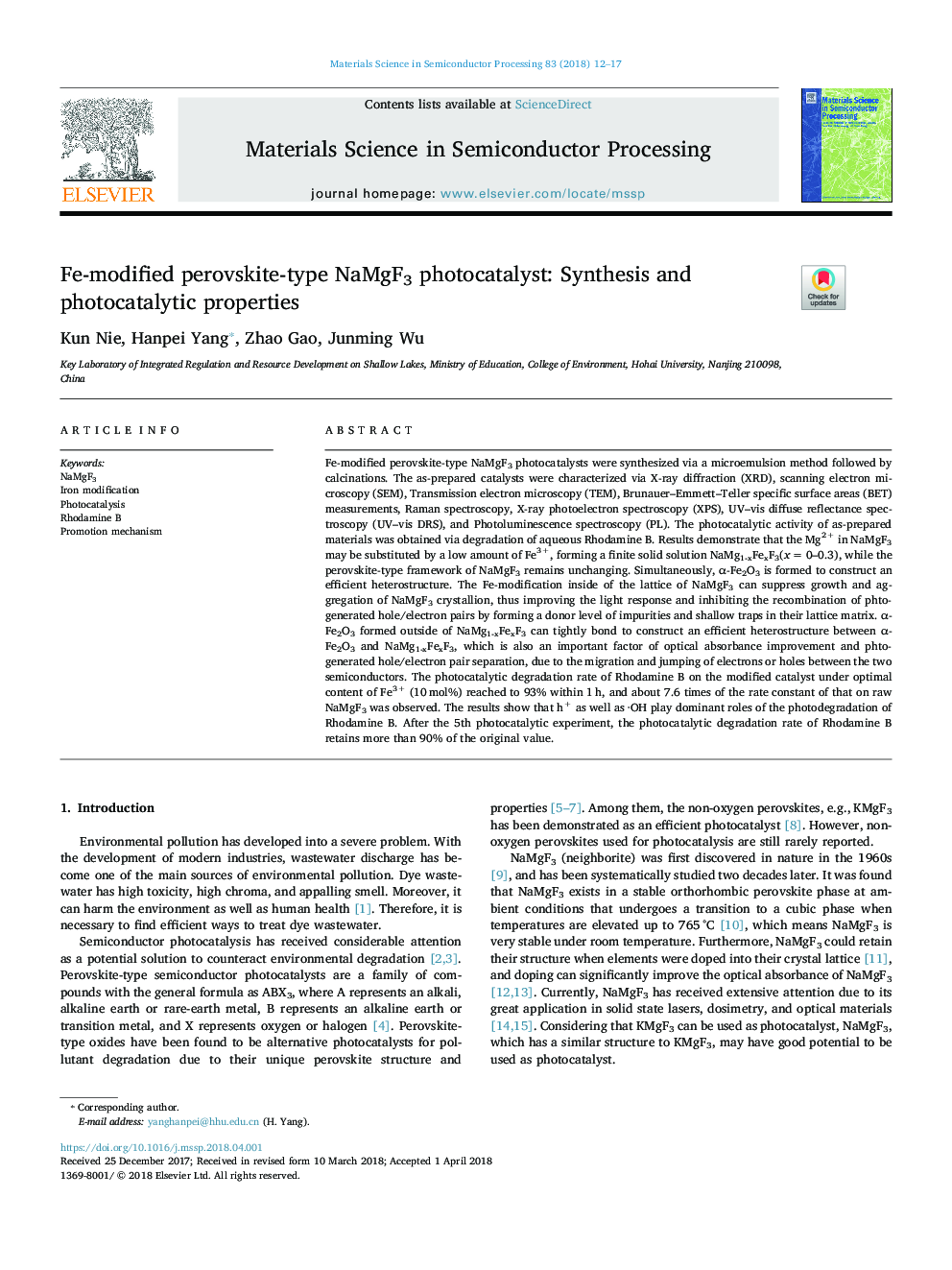| Article ID | Journal | Published Year | Pages | File Type |
|---|---|---|---|---|
| 7117556 | Materials Science in Semiconductor Processing | 2018 | 6 Pages |
Abstract
Fe-modified perovskite-type NaMgF3 photocatalysts were synthesized via a microemulsion method followed by calcinations. The as-prepared catalysts were characterized via X-ray diffraction (XRD), scanning electron microscopy (SEM), Transmission electron microscopy (TEM), Brunauer-Emmett-Teller specific surface areas (BET) measurements, Raman spectroscopy, X-ray photoelectron spectroscopy (XPS), UV-vis diffuse reflectance spectroscopy (UV-vis DRS), and Photoluminescence spectroscopy (PL). The photocatalytic activity of as-prepared materials was obtained via degradation of aqueous Rhodamine B. Results demonstrate that the Mg2+ in NaMgF3 may be substituted by a low amount of Fe3+, forming a finite solid solution NaMg1-xFexF3(xâ¯=â¯0-0.3), while the perovskite-type framework of NaMgF3 remains unchanging. Simultaneously, α-Fe2O3 is formed to construct an efficient heterostructure. The Fe-modification inside of the lattice of NaMgF3 can suppress growth and aggregation of NaMgF3 crystallion, thus improving the light response and inhibiting the recombination of phtogenerated hole/electron pairs by forming a donor level of impurities and shallow traps in their lattice matrix. α-Fe2O3 formed outside of NaMg1-xFexF3 can tightly bond to construct an efficient heterostructure between α-Fe2O3 and NaMg1-xFexF3, which is also an important factor of optical absorbance improvement and phtogenerated hole/electron pair separation, due to the migration and jumping of electrons or holes between the two semiconductors. The photocatalytic degradation rate of Rhodamine B on the modified catalyst under optimal content of Fe3+ (10â¯mol%) reached to 93% within 1â¯h, and about 7.6 times of the rate constant of that on raw NaMgF3 was observed. The results show that h+ as well as âOH play dominant roles of the photodegradation of Rhodamine B. After the 5th photocatalytic experiment, the photocatalytic degradation rate of Rhodamine B retains more than 90% of the original value.
Related Topics
Physical Sciences and Engineering
Engineering
Electrical and Electronic Engineering
Authors
Kun Nie, Hanpei Yang, Zhao Gao, Junming Wu,
